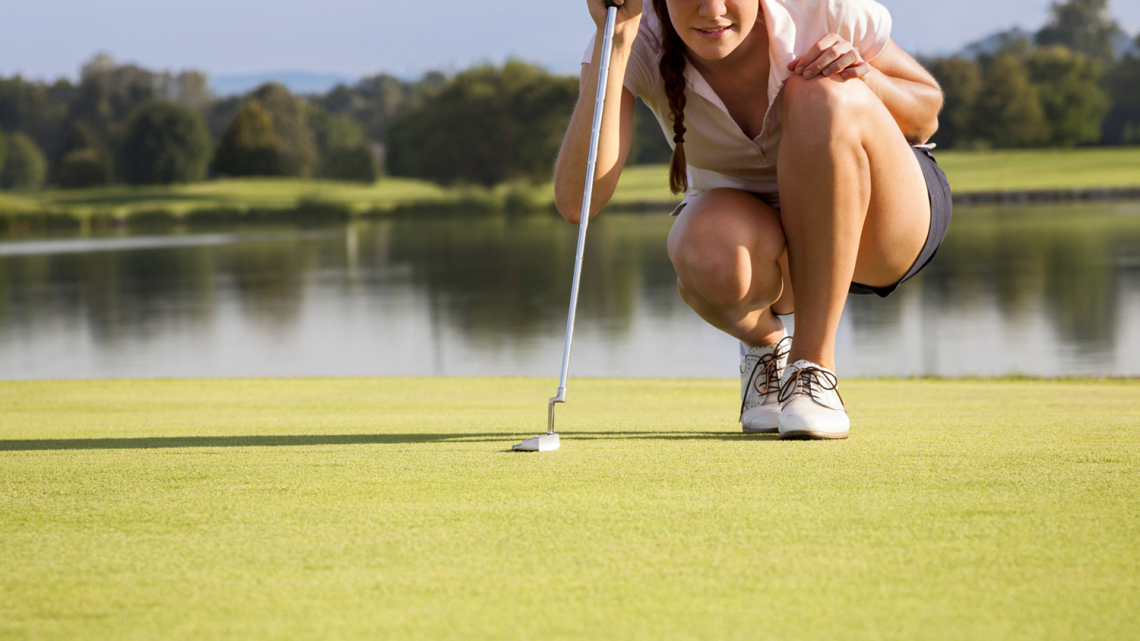Nothing Routine About Pre-Shot Preparations

Jack
Nicklaus stood behind every shot beforehand and visualized the future
in an out-of-body experience. Nicklaus’s visual imagery included seeing –
in his mind’s-eye – the setup, swing, ball flight and shot result
before he ever physically stood over the ball. You can’t argue with the
methods of an 18-time major champion. Golfers at every level can benefit
from doing the same.
Kim Kleinle, a PGA Certified Professional
in Instruction who teaches in both Pennsylvania and California,
provides firm advice for golfers looking to develop, or improve, a
pre-shot routine.
Forget mechanics and visualize
– Part of the reason for the pre-shot routine is to help you focus on
the task at hand and, ultimately, calm your nerves by giving you a sort
of security blanket that you can rely on during even the most
pressure-filled match. Imagine the shot you want to hit; don’t think
about all of the things that could go wrong.
Be consistent – Your pre-shot
routine does not need to follow all of these steps, nor in the exact
order, but it should be consistent each time. Develop a pre-shot routine
that fits your game and your personality. If you typically talk fast
and walk fast, for example, you might have more success with a shorter,
quicker routine. This type of person might not include a practice swing.
A tour player will take the same amount of time to go through his or
her pre-shot routine on each and every shot. It’s that consistency that
ensures the tour pro is properly aligned each time and has the right
mental imagery.
Practice your pre-shot routine –
When you hit the driving range, practice your pre-shot routine so it
becomes second nature. As an added benefit, your practice will become
more focused, too. Instead of rapid-firing a couple of buckets of balls,
you can boost the quality of your practice by going through your
pre-shot routine before every practice shot.
Analyze your shot and select your club
– Before you step up to the ball, you should decide what shot you are
going to hit and which club will be the best choice to execute that
shot. Once you make those decisions, trust your choices. When you stand
over the ball, you should not doubt yourself.
Line up the shot – Stand facing
down the line, with the ball between you and the target. Your
perspective is different standing behind the ball than alongside it.
From behind, you will be able to see the line better and aim more
successfully. Visualize a line extending from your target to the ball.
Find something just a few feet in front of the ball that is on that line
– an old divot, for example, and use that to help you line up. It’s
much easier to aim at a spot that’s a few feet away rather than one
that’s 200 yards away.
Rehearse the swing – Some golfers
will take their practice swing at this point – standing behind the ball.
Others prefer to stand alongside the ball to rehearse their swing.
Whatever you decide to do, use your practice swing to imagine the shot
you want to hit. Always take the same number of practice swings (one swing is preferred, especially from a pace-of-play point of view).
Take your aim and stance – Holding
the club in one hand, align your clubface down the target line, using
the intermediary target that you choose when you lined up the shot.
Align your feet along a line parallel to your target line (adjust if you
prefer a closed or open stance), and grip the club. One last look at
the target will help you focus in on the result you want.
To waggle or not – Many golfers
waggle the club to loosen the tension and trigger the start of the golf
swing. Some prefer a slight forward press just before starting the swing
– that serves as the waggle. Whether you choose to waggle or not, be
sure to release any tension just before you swing.



Comments
Post a Comment